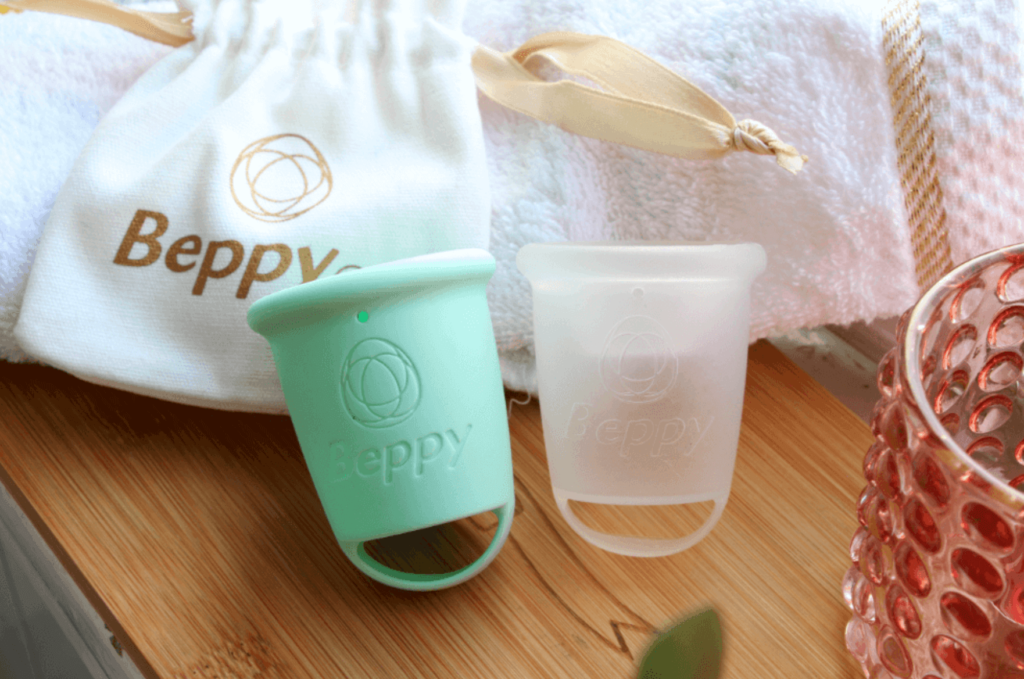Switch from disposable tampons and pads to Beppy! Experience ultimate comfort, hygiene, convenience, and sustainability.

In the late 1970s, users of tampons were particularly affected by Toxic Shock Syndrome (TSS). These tampons were made of synthetic fibers and had a high degree of absorption. Tampons were withdrawn from the market in 1980 and tampon brands began to make tampons that were safer, less absorbent, and made from natural cotton. These incidents also made women more aware about their menstrual hygiene and started changing their tampons 3-4 times a day. And, while nowadays the risk of having TSS has been reduced, it has not completely disappeared.
TSS is a disease characterized by fever, hypotension, skin rashes similar to sunburns, and vital organ failure. It’s considered a life-threatening syndrome and is commonly caused by staphylococcus bacteria. Staphylococcus constitutes part of the normal flower of the nasal cavity and the vagina. However, if this bacteria enters your bloodstream it can release harmful toxins that will cause TSS.
Although this syndrome usually occurs especially in young women due to the use of tampons, it can also affect anyone of any age, including men and children.
One of the characteristics of TSS is that it gets worse very quickly and can be fatal if not treated right away, causing permanent damage to vital organs, necrosis, amputation and even death. However, if diagnosed and treated early, most people make a full recovery.
The symptoms of TSS start suddenly and develop quickly. These include:
In a study entitled Association of the characteristics of tampon use with menstrual toxic shock syndrome in France published in 2011, it was concluded that the use of superabsorbent tampons is one of the major causes of this syndrome, since they remain inside the vagina for long periods. Being warm and humid, the vaginal canal becomes a suitable area for the growth and reproduction of bacteria without means for the body to release them, thus generating infection. The study also concluded that the risk of developing TSS increases when using a tampon for 6 hours or more, regardless of the absorption capacity of it. This includes the risk of tampon use at night.
For menstrual cups there are contradicting studies when it comes to an increased risk of TSS. The Lancet published a study Use, leakage, acceptability, safety and availability of the menstrual cup: a systematic review and a meta-analysis published in 2019, reviewing 43 studies related to menstrual cups. Based on all data their statement is: ”Our review indicates that menstrual cups are a safe option for menstruation management and are being used internationally. Good quality studies in this field are needed. Further studies are needed on cost-effectiveness and environmental effect comparing different menstrual products.”
Although menstrual cups are seen as safe menstrual products, it is important to be aware of TSS development when using menstrual cups. The study done by Nonfoux et al. (2018) indicates a growth of Staphylococcus aureus and TSST-1 production on menstrual cups after 8 hours (in-vitro). Even after 3 washes with water the biofilm of Staphylococcus aureus remained. Based on their study they state: “A protocol including a second cup that allows for cup sterilization by boiling between uses should be recommended”.
As TSS is a rare disease it is important to always be aware of the risk and the symptoms related to TSS.
Bibliography:
€36,95
* Prices incl. VAT, Shipping costs€39,99
* Prices incl. VAT, Shipping costs€34,95
* Prices incl. VAT, Shipping costsNL: +3110 467 65 73 (9.00 – 17.00)
HQ Beppy, Nederland
Seinhuiswachter 1-3
3034 KH Rotterdam
BE: +32 (0)78 158 349 (9.00 – 17.00)
Beppy, België
9A Gravin Elisabethlaan, postbus 77
2320 Hoogstraten
Kvk: 24123466
© 2025 – Made with ❤️ by Beppy
Looks like you haven't made a choice yet.